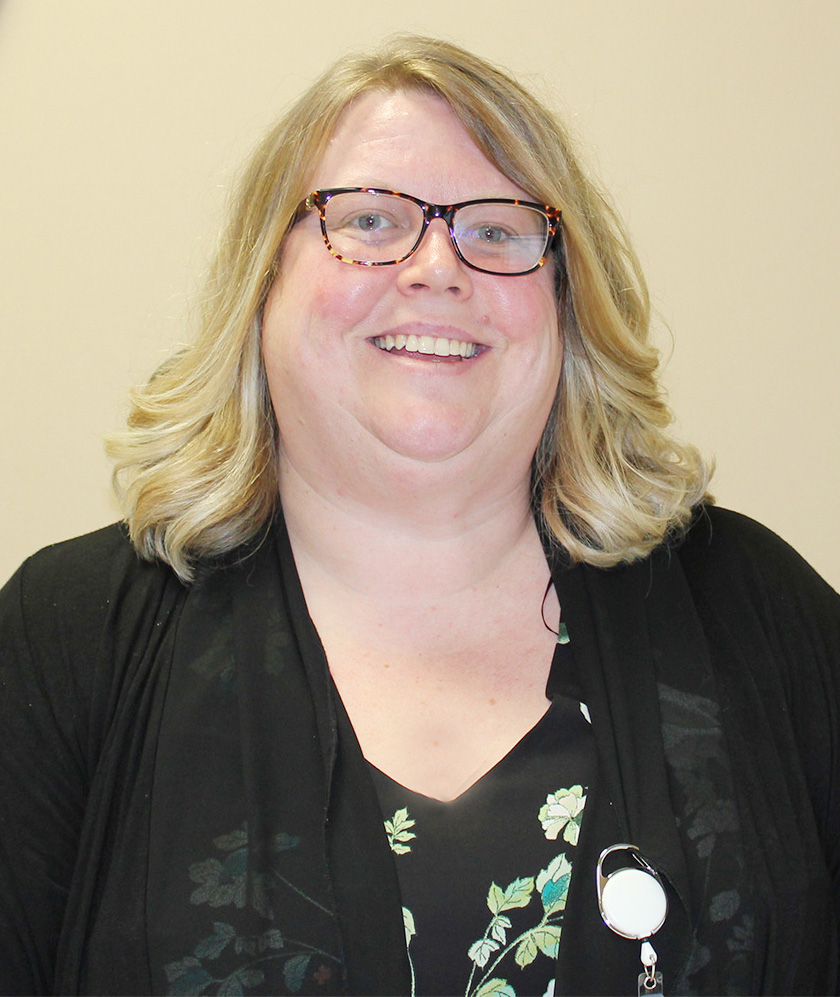Holzer receives funds for Low-Dose CT Scan

Nicole Koren, Program Coordinator for Low-Dose CT Lung Cancer Screening, Holzer Health System.

Holzer receives funds for Low-Dose CT Scan
Finding early signs of lung cancer was once next to impossible, however, studies are proving that screening with low-dose CT scans may identify the beginnings of disease in high-risk patients. Holzer is proud to offer this type of screening at our Athens and Gallipolis locations and has received a grant from Whedon Cancer Detection Foundation to provide a limited number of free screenings to those whoqualify.
Holzer Health System is designated as a Lung Cancer Screening Center by the American College of Radiology (ACR). Holzer began its Low-Dose CT Scan Program on September 1, 2015 and to date has completed over 500 studies. In addition, a number of patients have not been able to have the scan due to financial constraints. By obtaining these grant funds, Holzer is able to offer a limited number of screenings for individuals who qualify.
Lung cancer is the leading cause of cancer death in the U.S. The American Cancer Society’s estimates approximately 228,150 new cases diagnosed and 142,670 deaths from lung cancer in 2019. The 5-year survival rate for lung cancer patients is 18.6 percent. An annual Low-dose CT Screening Test for individuals at high risk has the potential to dramatically improve lung cancer survival rates by finding the disease at an early treatable stage. It is estimated that if everyone who is at high risk is screened, there will be a 14 percent reduction in lung cancer deaths in the United States.
The goal of screening is to detect lung cancer at a time when it is not causing symptoms and when treatment can be most successful. Screening should increase survival and quality of life. An important recent study referred to as the National Lung Screening Trial (NLST) has demonstrated that screening under the appropriate conditions and in the right individuals can reduce death from lung cancer by 20%. Additional factors such as family history and occupational exposure can play a role and should be discussed with your doctor or a member of our lung team. We will only screen those individuals who are considered high risk.
Every person scheduled for the screening will meet with Holzer’s Program Coordinator who will answer questions and facilitate any follow up necessary. She will communicate with the referring physician and the Holzer Lung Team to ensure comprehensive care.
“Considering the large number of smokers in the Southern Ohio, we are pleased to be able to offer this service. We have already detected several lung cancers at stages where they are treatable. We are excited about the prospect of saving additional lives with this quick, simple procedure,” stated Philip Long, MD, Radiologist. “We are thankful to all of our staff for their efforts to make this process easy for our patients and expedite follow-up with physicians in other specialized areas if necessary.”
Individuals who are eligible to receive the low-dose CT scan include patients age 55-77, and are smokers or who have quit within the last 15 years with a smoking history of at least 30 pack-years. Pack-years are calculated by multiplying the average number of packs of cigarettes a person smokes per day by the number of years a person has smoked.
The benefits of lung cancer screening CT scans are highest for those with significant lung cancer risk. Current research has focused on patients at a high risk for lung cancer. Several factors contribute to lung cancer risk: age, smoking history, environmental exposure to carcinogens like asbestos, beryllium, or radon; and exposure to second-hand smoke. The older you are and the more you’ve smoked or been exposed to smoke and other carcinogens, the higher your risk will be. Whilst one of the main causes is probably smoke, radon does also have an impact. Many buildings can have radon in them, from schools to homes, so it’s important that more people consider contacting a radon testing colorado springs company, for example, that can test for any traces of radon and remove them. This will lower the risk of radon causing cancer.
“We are excited that Whedon Cancer Detections Foundation agreed to fund our request to enhance the Holzer Health System Low-Dose CT Scan Program for the second year in a row,” Chris Thomas, Director of Imaging Services, Holzer Health System. “As a result, it has afforded us the opportunity to offer this proven lifesaving early detection scan to patients who otherwise might not receive it. This is just another example of the great things happening here at Holzer to benefit our patients.”
CT Stands for “computerized tomography”. In a CT scan dozens of low-dose X-rays are taken all at once from various angles. The information is fed into a computer which produces highly detailed, cross-sectional pictures of the body. (If you think of the body as a loaf of bread, what the CT can do is provide a highly detailed image of any “slice” of that loaf). Unlike regular x-rays, these pictures can show tiny differences present in soft tissue and bone. CT scans are typically used to look for cancer in various organs.
New CT scanners such as the advanced 64 slice Brilliance CT used at Holzer are designed to ensure low levels of radiation exposure to patients and staff. Today’s advanced CT scanners offer an optimal combination of low radiation exposure and short examination times while maintaining excellent quality images. CT results will be read by a radiologist, usually within 24 hours. Holzer boasts five Board Certified Radiologists: Phillip B. Long, MD, Medical Director, Radiology, Michael Meyers, DO, Bruce Pennington, MD, Dean Siciliano, MD, Stephen Conley, MD, with extensive experience reading CT scans. Results are mailed to the patient in a week or less with instructions. They are also available on our patient portal, MyHolzer.com.
For more information, call (740) 441-3905 or email [email protected].






